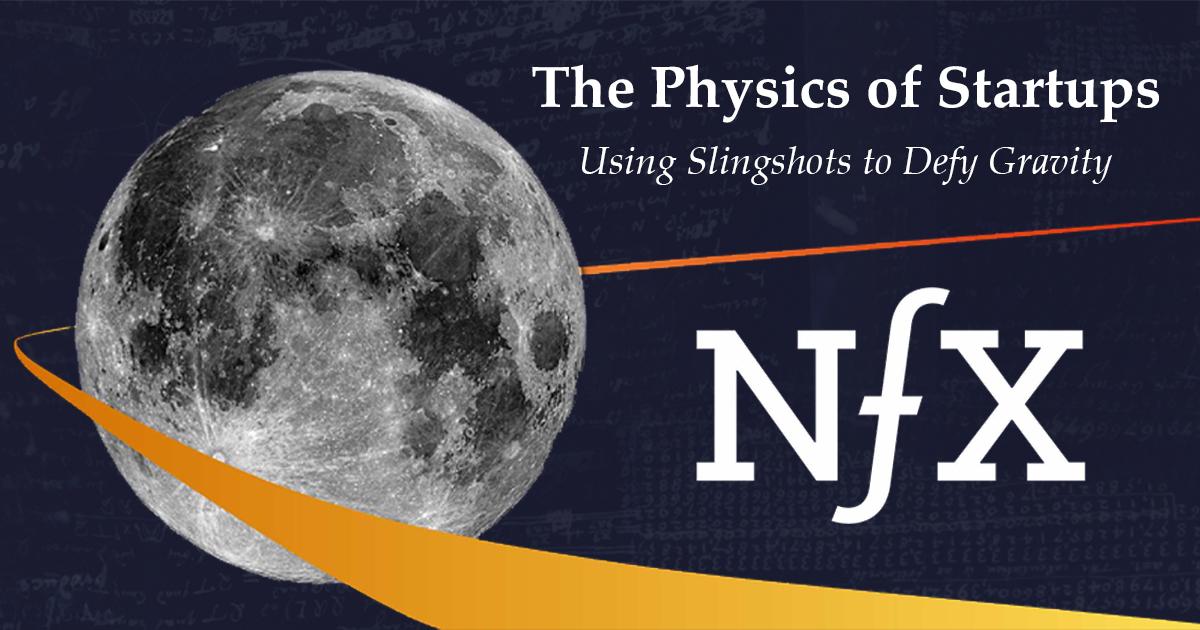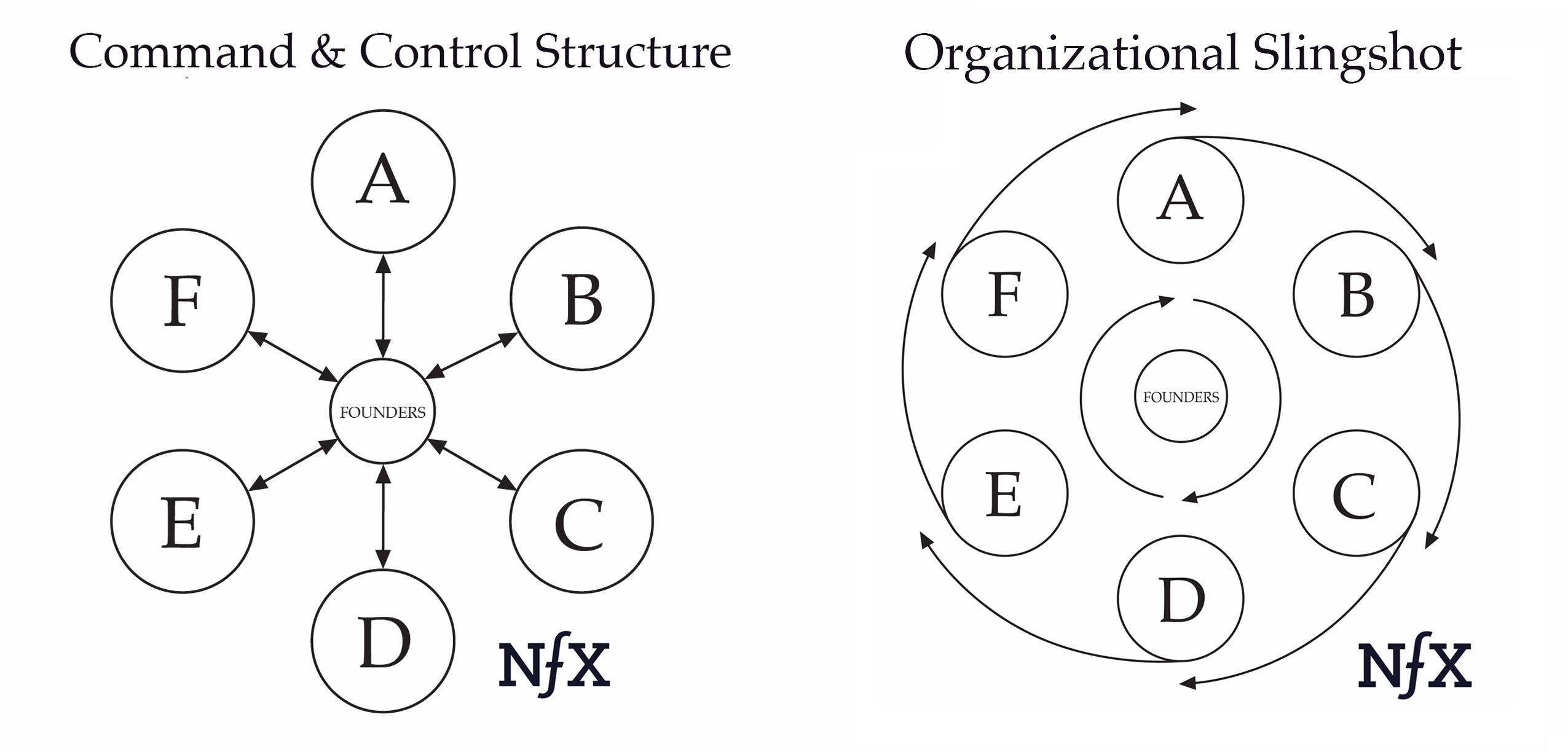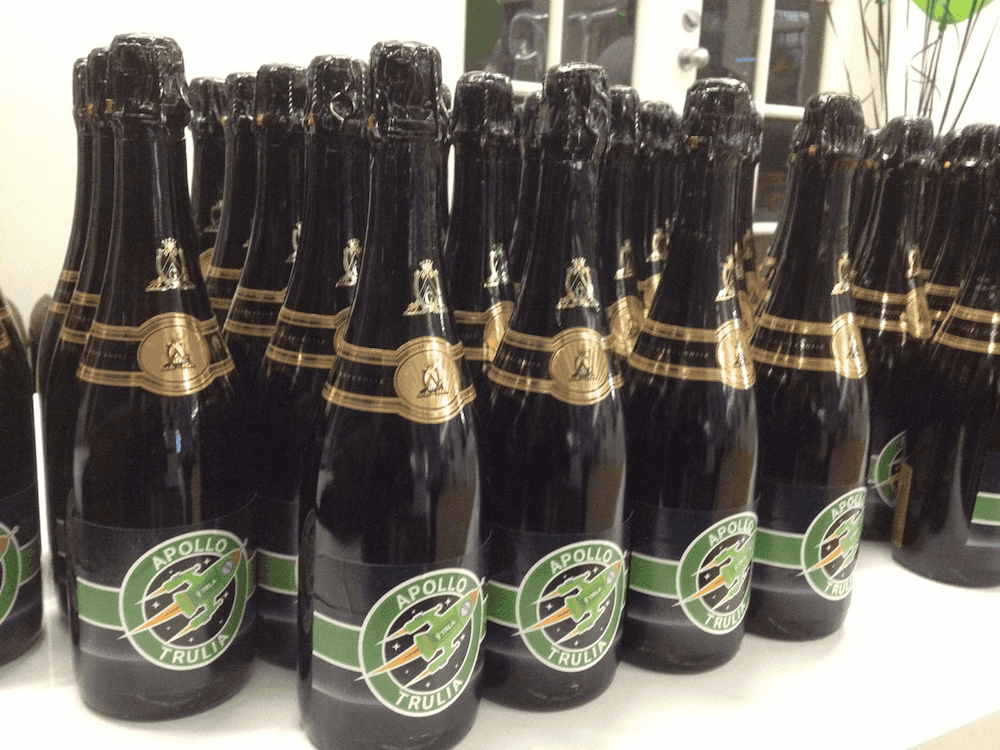

The slingshot is a remarkable tool. A gravitational slingshot helped the Apollo 13 mission return to Earth safely after a catastrophic oxygen tank explosion that almost doomed everyone on board. An actual slingshot helped David defeat Goliath in the biblical story. Slingshots are a symbol of achieving remarkable results with limited resources.
That’s why slingshots are such a perfect symbol for startups. I discovered this as the founder and CEO of Trulia, where scaling a rapidly growing new startup in the early days sometimes felt like being an astronaut on Apollo 13. Just like the astronauts of the Apollo 13 mission, we used the concept of a slingshot to build speed and escape startup destruction.
Speed vs. quality of outcome
At early stage startups, one of the fundamental challenges you constantly face is balancing between speed and quality of outcome, two competing priorities that often come into conflict.


There are four basic “zones” which companies can fall in with respect to speed & quality of outcome.
Slow decisions and low-quality outcomes represent a “dead zone”; companies moving slowly and not producing quality will unsurprisingly lose to competition and soon be out of business.
Big, established corporations (the “incumbent zone”) also tend to move slowly because they lack the incentives and capacity to move quickly. They can afford a slow pace because they have a built-in scale advantage and significant market share and are more focused on protecting their position than rapid innovation.
The “frenetic zone” describes many startups who subscribe to the “move fast and break things” mantra a little too enthusiastically, leading to caffeine-fueled chaotic environment. Startups in this bucket typically make reckless decisions with a speed-at-all-costs mentality. Although necessary for startup success, speed alone isn’t sufficient.
A startup’s success will ultimately hinge on its ability to think long-term while keeping up a frenetic pace — the “target zone” depicted in the top-right of the graph above. This is often the most difficult piece: learning to keep an eye on the long term while sprinting to stay alive. You need a process to keep a constant watch on the long term or you’ll lose sight of it beneath a never-ending pile of action items.
Moving to the “Target Zone”
At Trulia, we learned this the hard way. Early on, while the company was smaller than 50 people, we were operating under a command-and-control structure that was convenient for keeping up our pace of growth and setting our early direction. The entire organization was treated as one massive team, with the founders driving most of the decisions.
The upside of this is that we could make sure that everyone was tightly coordinated and tasks were completed in accordance with our overall plan. The downside, which we didn’t fully realize, was limited access to ideas and ownership of outcome. Without this, employees didn’t have the freedom to take the initiative, innovate, problem-solve, and implement on the basis of their specific knowledge, focus and expertise.
But around the time we reached 50 people, when we began to work on a massive website relaunch, our command-and-control model started to break down. We had the entire team working on the project for months. When it finally launched, it was a spectacular failure. All the metrics started tanking. We already had very limited resources, and all the work we had put in over the last month went to waste.
At the same time this was happening, the housing collapse had just come into full swing and began wreaking havoc on the real estate market. To make matters worse, our closest competitor Zillow had just closed a round of funding that gave them access to five times the amount of capital we had. These existential threats, combined with our failed launch, forced us to change the way we operated because otherwise we knew we wouldn’t survive. The world was sending us a clear message: adapt or die.
When the Apollo 13 oxygen tank blew up, resources aboard became very scarce, including fuel. The Apollo 13 crew had to find out how to get home with far less of anything than planned. Their only hope was to use the gravitational pull of the Moon to slingshot them back to earth, saving them much-needed time and fuel.
At Trulia, we were in a similar spot. With months of runway wasted on a project that didn’t pan out, we needed to figure out a way to regain velocity without burning our limited “fuel” (i.e. funding and morale). We were faced with the question: how do you accelerate innovation and execution as your organization grows in scale and complexity, without compromising your quality of outcome?
For a solution, we drew inspiration from the gravitational slingshot concept to create our own Organizational Slingshot. Our notion was to use the “orbital force” of the individual teams and employees to help them accelerate each other, rather than relying on the Founders for their motion.
In other words, we needed to create a more decentralized organization. We wanted to push innovation to the edge of the company, give individual teams and employees more autonomy, and make our company as a whole more nimble and adaptive so that we could keep moving fast even as we grew.
Since we had to decentralize without losing focus, we implemented an organizational process which we internally referred to as “Slingshots” to help us achieve a more decentralized structure. Slingshots were intended to propel us out of the command-and-control rut we had fallen into by transforming the structure of our company.


Command & Control Structure
- Slow-moving
- Innovation-stifling
- Disempowering
- Low-morale
Slingshot Structure
- Adaptive
- Fast-moving
- Innovation-friendly
- High-morale
Refactoring an organization to become more decentralized happens incrementally. Our own Slingshot process had four components.
1. Plot the optimal course
We’d considered other organizational structures, but had not been very happy with them. OKR’s (Objectives and Key Results) were often too “top-down” and cumbersome for what we wanted. The dreaded Quarterly Business Review (QBR) felt more like a hostile interrogation than a collaborative process. In many QBRs, people report to their managers attempting to prove they’ve made progress over the last quarter and have hit their goals. The meetings are backward-looking and often assume a punitive character, rather than being forward-looking and constructive.
We felt there had to be a better path; something that would enable us to go fast, make the best use of talent, find the balance between autonomy and collaboration, and push learning and ownership to the edge of the organization. We thought about each team as a startup within a startup.
The founders defined the mission and KPIs for each of the teams, while leaving the tactics and execution up to the team leads and employees. Then, once we had reached a size of between 3 to 5 teams, we began holding monthly Slingshot meetings (which later became quarterly) which focused on three things:
- Checking trajectory (Performance against targets, major challenges. 20% of meeting).
- Plotting out a course (6-month plan. 50% of meeting).
- Reducing friction (discuss blockers & friction points. 30% of meeting).
A Slingshot meeting began with a brief period of review, which allowed us to get a sense of where the team or individual was in relation to their targets and to the organization as a whole. The founders would define the mission and KPIs, while leaving the tactics and execution up to the team leads and team members.
The biggest part of a Slingshot meeting (50%) involved coming up with a six-month plan: allowing the team to decide how best to hit their target KPIs with the resources they had been allotted. This six-month plan was stored on a drive and publicly accessible by the rest of the company, as were the specific performance targets for each of the teams.
This shifted the meeting from a top-down review to a collaboration, where everyone in the organization was a resource for the team as much as vice versa.
The idea was for teams to use each other in these meetings as a resource to pursue their own team objectives, instead of imposing an additional burden on top of their existing jobs. Rather than struggling under the weight of a top-heavy hierarchy crushing everything below, Slingshots gave employees a way to catapult themselves forward using management and peers as catalysts for their objectives.


2. Build for speed with lightweight coordination
Another issue that arises with a centralized organizational model is that all coordination between teams and employees takes place through Founders acting as the intermediary.
Some level of this is inevitable since there is some chain-of-command element necessary for deploying resources (budgets, hiring quotas, etc.). But what we learned is that when it comes to projects that pull in multiple teams, every additional intermediary between teams turns into a point of friction, which can quickly become significant. Everything gets slowed down.
If a marketing team needs help from an engineering team to develop a landing page, adding the extra step of going through central command can destroy momentum. And for fast-growing startups, such slowdowns can be deadly.
In Slingshot meetings, we would discuss obstacles and blockers for the last part of the meeting so the Founders could do everything in their power to speed things up. We used email, collaboration tools and automated dashboards to keep a large group of people informed without wasting time with meetings. We would look for every opportunity to remove friction from the decision making and execution process.
Ultimately, coordination is about giving everyone a clear understanding of their narrow role while having broader context so that they can coordinate without having to be directed. This reduces the number of stakeholders involved in each task, making execution faster and more lightweight.


3. Make sure the best ideas are heard
One process that helped teams coordinate better without top-down direction was the expanded membership of a Slingshot meeting. In a traditional Quarterly Business Review, only the team leads would attend. A QBR for a marketing team will probably be attended by senior marketing people, but not always by leaders of peer organizational functions like technology, product, etc.
But the really hard problems being faced by a startup usually transcend the mandate of any individual team in scope, so why limit the solution to a single team? You never know what employees from other teams may be able to offer in terms of ideas, solutions, or even help. Other employees are frequently the greatest untapped resource of a company, even though they’re also one of the most powerful.
To build this into the organization, Slingshot meetings were published internally and visible to anyone within the organization. This let different teams and employees get an idea what others were up to, and allowed for organic coordination between different teams working towards similar goals or working on the same project.
Slingshot meetings were also open-attendance, so that anyone with an interest in what a team was doing could attend. Everyone knew what everyone else was working on, so Slingshots would serve as a forum for them to help each other succeed.
Sharing information openly and getting teams to report against their previously stated targets had the effect of encouraging teams to create aggressive and stretch targets for themselves. No one wanted to disappoint their peers; everyone wanted to impress them.
Knowing a team’s goals motivated people from other teams to rally to their aid and do whatever they could to help them achieve their goals. When people are in the dark about what you’re trying to do, they can’t help you. When they’re aware, they start rooting for you and they’ll help where and where they can. This leads to better solutions and a much stronger spirit of camaraderie.
As a result of our efforts to promote transparency, there was an environment of continuous learning and open communications at Trulia. Regular time spent between teams who wouldn’t otherwise interact proved to be a powerful source of innovation, learning, and collaboration. It prevented silos from becoming too entrenched and let people make better use of their co-workers.


4. Analyze & Implement Course Corrections
Initially, the Slingshot meetings would last about half a day with back-to-back sessions for each team. The senior team would be there for each team’s Slingshot meeting. Afterwards, we would have a working dinner as founders, and as we grew as other senior team members. We would review all the major blockers, issues, and course corrections that arose, as well as look to manage and rebalance resources. As the organization grew, creating a forum where everyone knew about every major project in a short and efficient process was incredibly valuable and engaging.
Given how much our decision-making and iteration process benefited from Slingshots, the time invested was more than worth it. We also made constant tweaks to the Slingshot process along the way, updating the “operating system” for the organization as it scaled.
The outputs from the Slingshots and our follow-up meetings quickly became tangible. We were able to make better tactical decisions on hiring, which projects to kill, and where we needed more data to make decisions. It elevated the most important or strategic questions to be answered by the founders or senior team, so we could focus on these, rather than the tactical execution. A feedback loop was created where we would get input on how we could improve communication and execution across the teams. We were also better able to allocate resources across the wealth of projects and initiatives, since the Slingshots would give us a clear view of what was going on both within each team and across the company as a whole.
Ultimately, regular course corrections are necessary in order to avoid drifting off track as a company and adjusting to new data and the competitive environment. It’s very easy (and very tempting) to get lost in the day-to-day and forget about the bigger picture, and you need a system to force you not to succumb to that temptation. It doesn’t ultimately matter how fast you’re going if you’ve lost your direction.
Determining the right organizational process depends greatly on your culture, team size, leadership and market. It needs to be frequently revisited and each company is different. For example Apple, today the world’s most valuable company, has historically had a strong “Command and Control” structure and has clearly been very successful with it. Figuring out what works for your company and culture is critical.


Slingshotting to an IPO


From roughly 2007 up until 2012, the Organizational Slingshot process remained a hallmark of the company’s organizational cadence. It allowed us to make fast decisions without compromising the quality of our outcome; with everyone on the same page, we made better hiring decisions, killed redundant projects quickly, and surfaced the best ideas.
Changing our organizational structure after we had already got going was not an easy task.
But if you don’t step back and make course corrections in advance, you’ll lose out on big opportunities. When market stresses are high, there’s an opportunity for startups who have successfully created a lightweight, decentralized organization. They can move quickly, they’re highly adaptable, and for them, market volatility equals opportunity. So just when old-guard enterprise competitors with centralized corporate Goliaths are most vulnerable, startups can slingshot their way to victory.
This is exactly what happened for us. I credit the Organizational Slingshot and the team that helped to develop and execute it as a big reason why Trulia was able to successfully navigate the housing collapse, IPO and then go onto merge with Zillow in a $3.5BN transaction. We even referred to our IPO internally as “Apollo”, which was inspired by the Slingshot process that helped us get there just 5 years after our own near death experience.
A note of particular thanks to: Sami Inkinen, Paul Levine, Heather Fernandez, Sean Black and Ken Shuman for their help in building Trulia, improving the Slingshot process over the years and for reviewing earlier drafts of this and reminding me of some important details!
Pete Flint is the founder and former Chairman and CEO of Trulia. In 2015 Pete merged Trulia with Zillow in a transaction which valued Trulia at $3.5BN, after which he served on the Zillow Group board. Previously he was part of the founding team of lastminute.com which was acquired for over $1.1BN. Today, he is a Managing Partner at NFX. Follow Pete on Twitter.
NFX is a Pre-Seed and Seed venture fund based in San Francisco. Founded by entrepreneurs who built 10 companies with more than $10 billion in exits across multiple industries and geographies, NFX is transforming how true innovators are funded. Follow us on Twitter.
As Founders ourselves, we respect your time. That’s why we built BriefLink, a new software tool that minimizes the upfront time of getting the VC meeting. Simply tell us about your company in 9 easy questions, and you’ll hear from us if it’s a fit.
